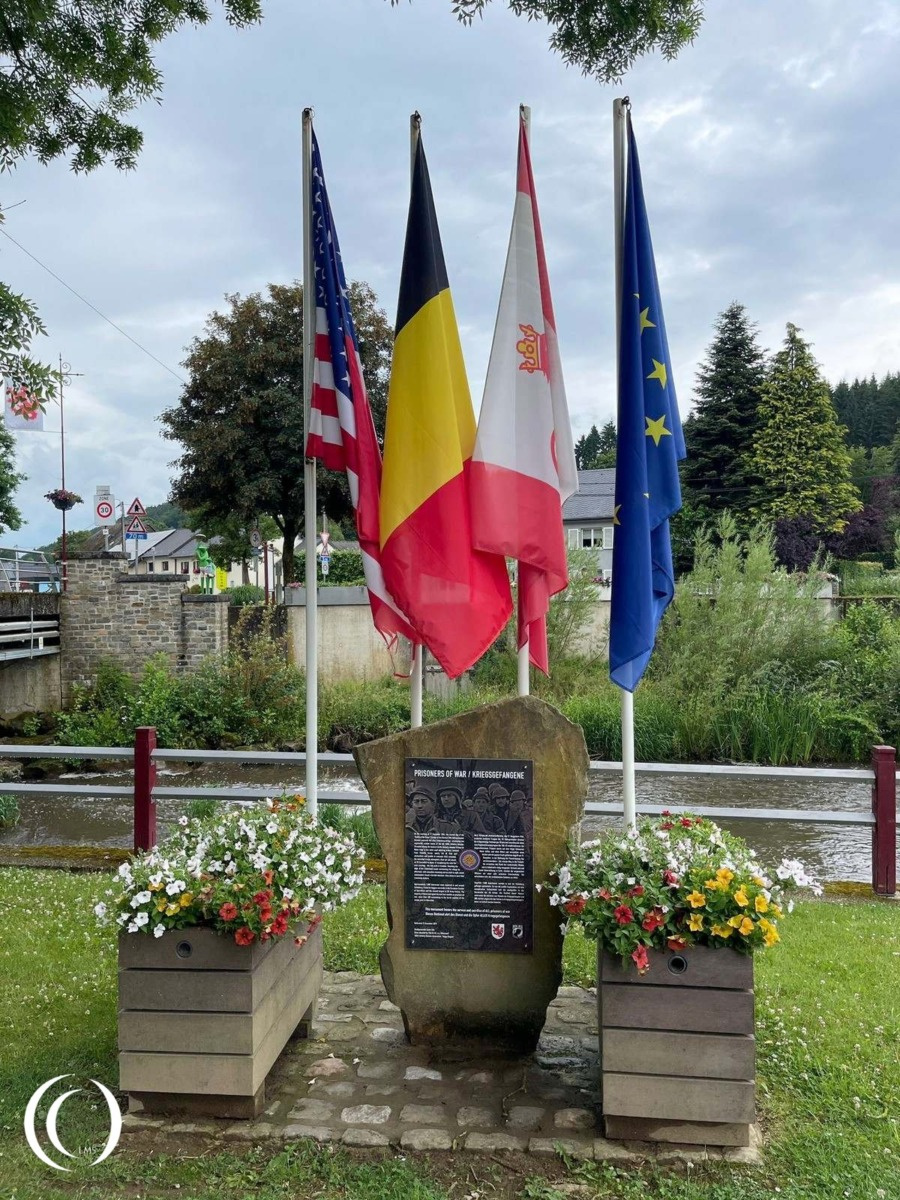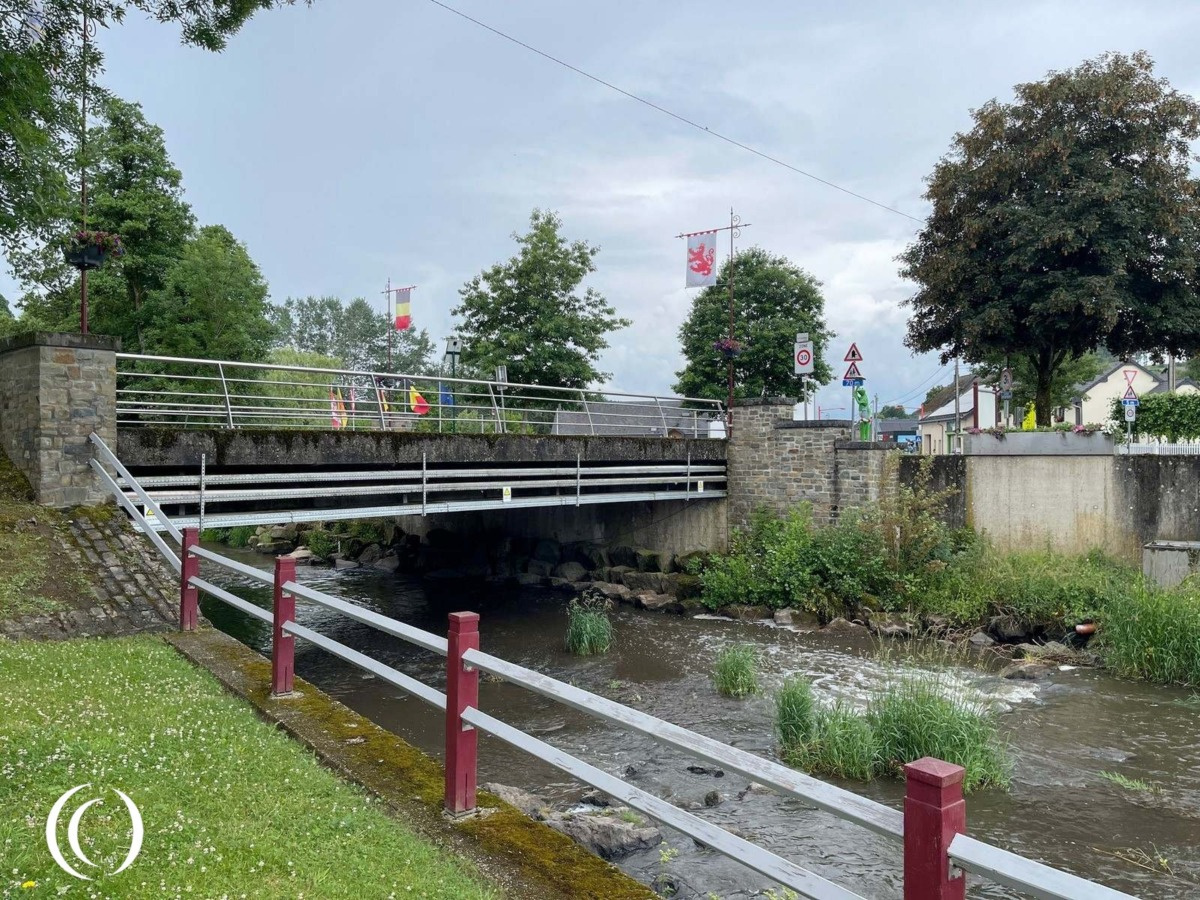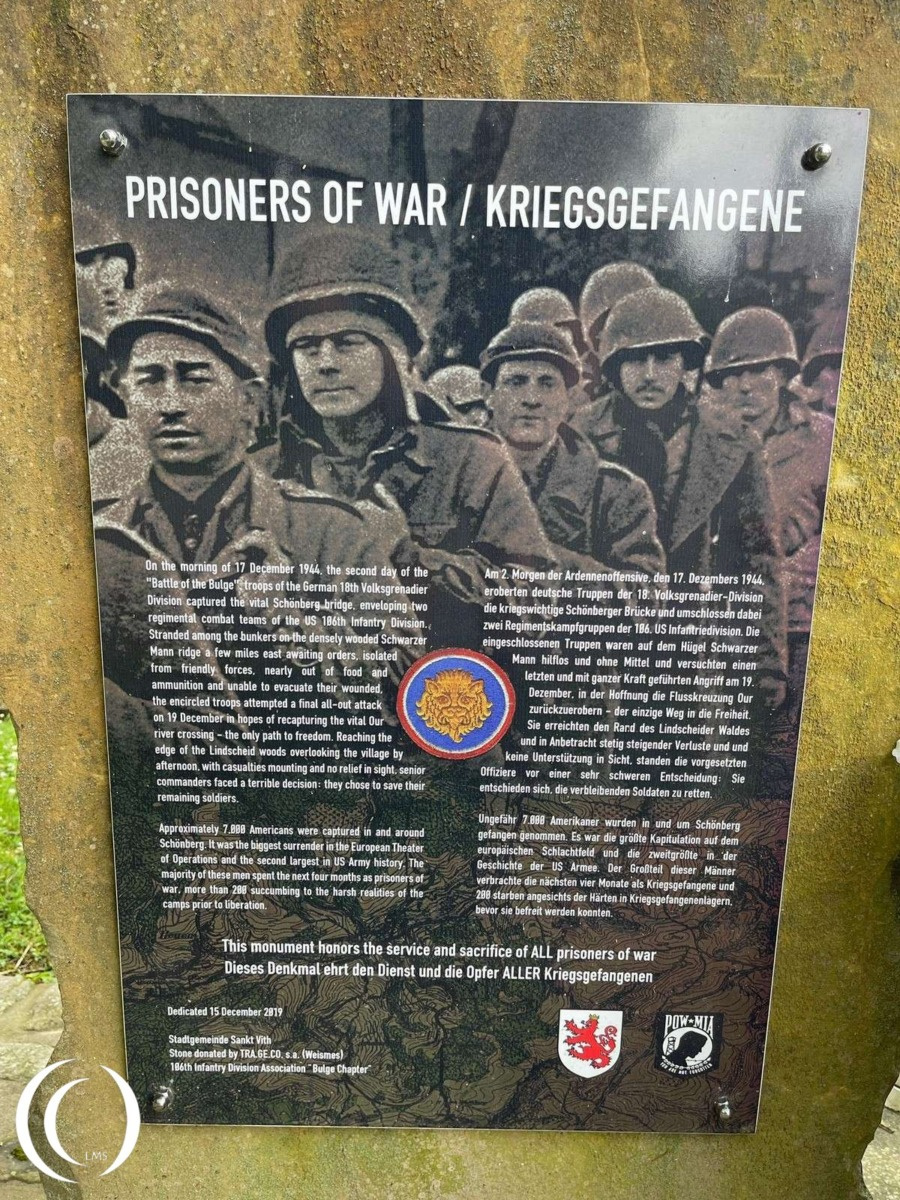
In mid‑December 1944, the newly deployed 106th Infantry Division of the U.S. Army, covering a broad front in the Schnee Eifel region, faced the initial thrust of Germany’s Ardennes Offensive. On 16 December, German forces breached the American lines near Auw bei Prüm in Germany and advanced westward toward the critical village of Schönberg in Belgium, cutting through the 422nd and 423rd Infantry Regiments and severing communication and supply routes.
On 17 December at around 08:45, German troops crossed the unblown bridge at Schönberg, effectively encircling the two regiments alongside their supporting artillery units (the 589th and 590th Battalions). Attempts by U.S. commanders to break out and retake the bridge the next day failed: despite a planned counterattack at 10:00 a.m., heavy attack-gun, anti-aircraft, armored, and infantry fire overwhelmed the Americans, who were already low on ammunition.

By 16:00 on 19 December, Colonel George Descheneaux—commander of the 422nd Regiment—formally surrendered the encircled units. Approximately 7,000 men from the 422nd and 423rd Regiments, along with supporting elements, became German prisoners of war, making it the largest U.S. surrender in the European Theater of Operations.
Meanwhile, remnants of the division—including the 424th Regiment and elements of the 81st Engineer Combat Battalion—retained command of St. Vith and mounted a delaying defense. These forces were reinforced by the 28th Infantry Division and held their lines until withdrawal orders were issued, helping to slow the German timetable during the Ardennes campaign.

The surrender at Schönberg resulted from a rapid German infiltration, communication breakdowns, and a misaligned withdrawal order. The capture of two entire regiments—422nd and 423rd—constituted one of the most significant single-unit defeats experienced by American forces in WWII.
Visit
Walk from the church towards the bridge and the memorial in eyesight, accessible 24 hours a day.